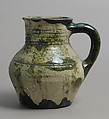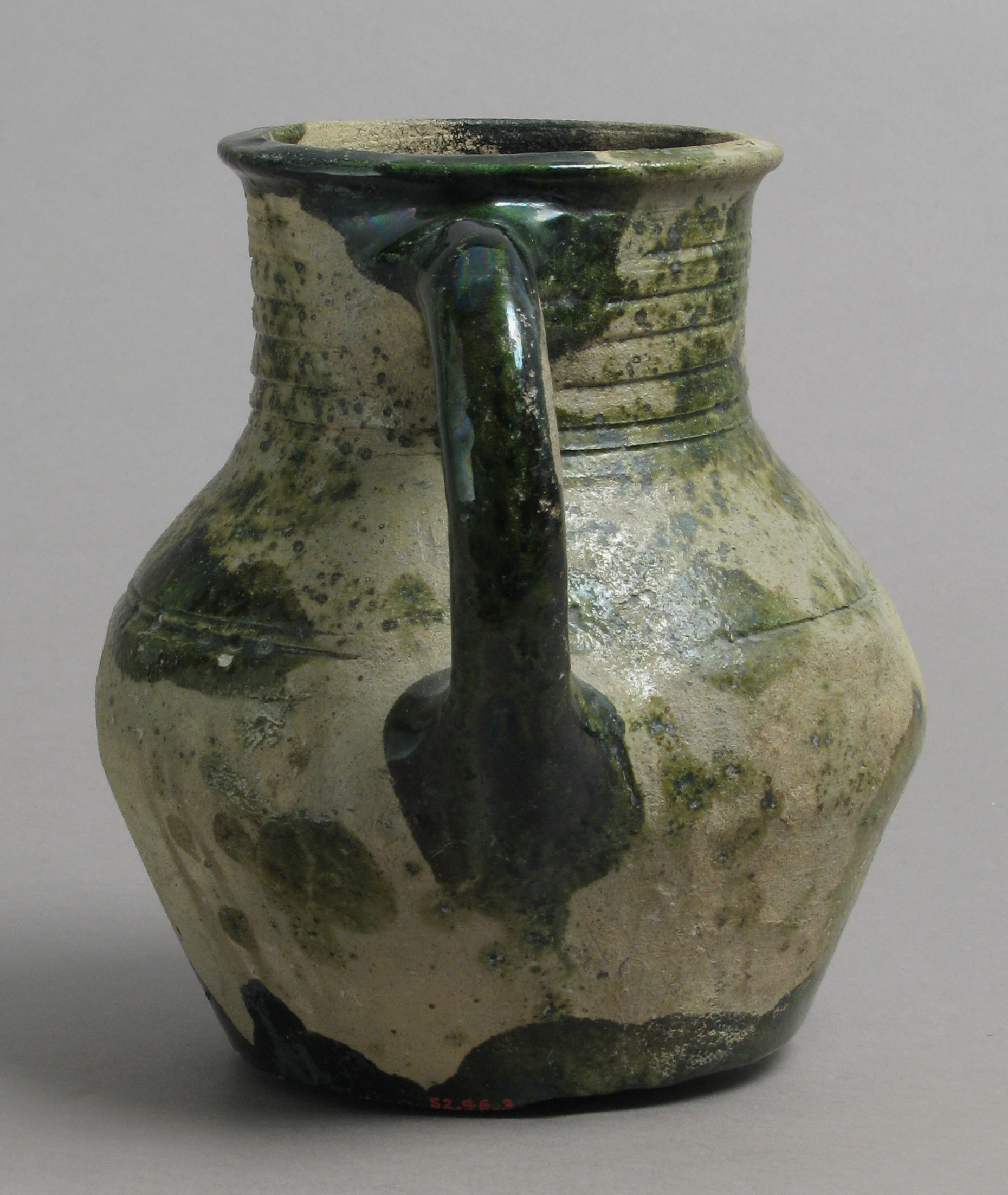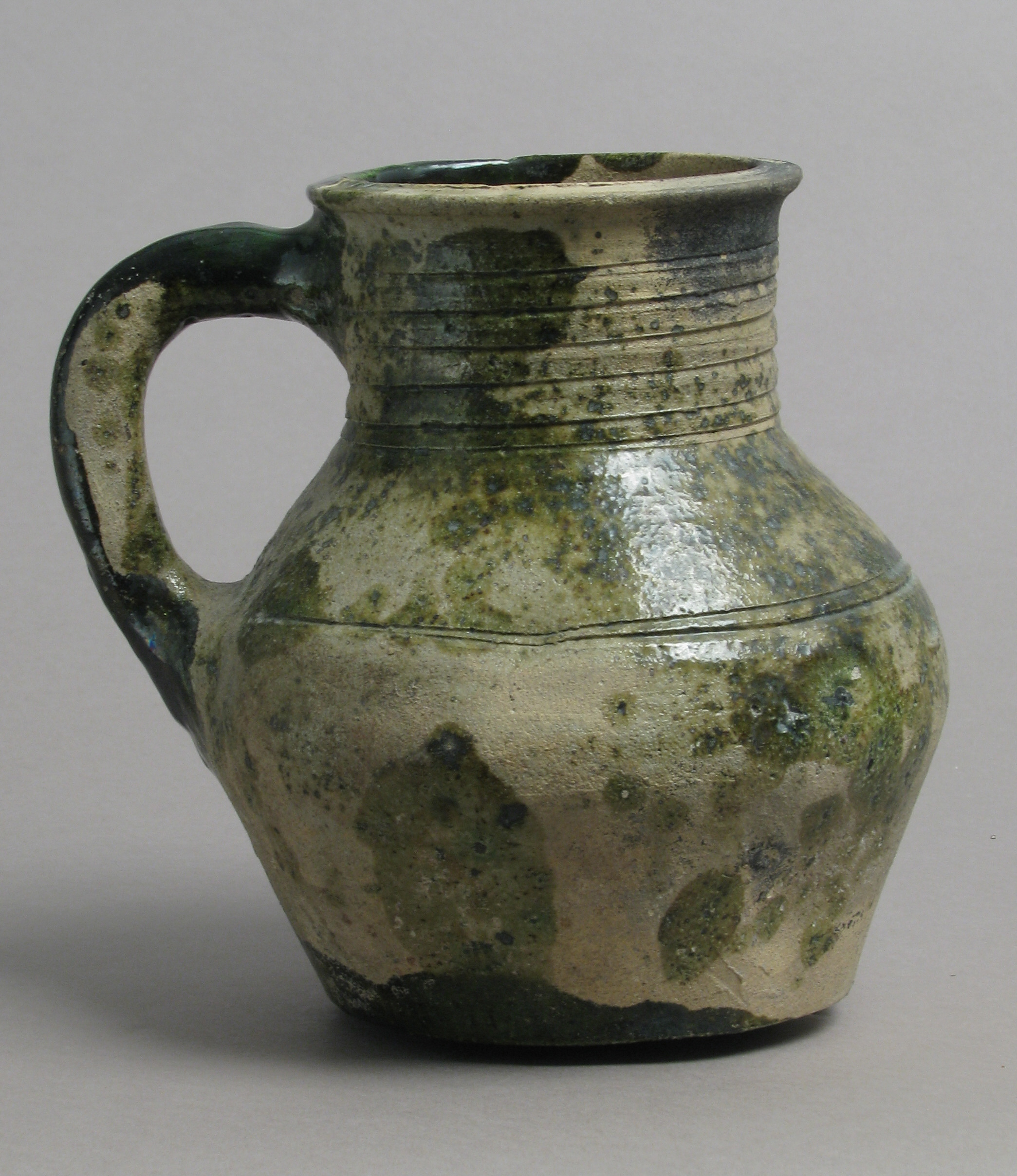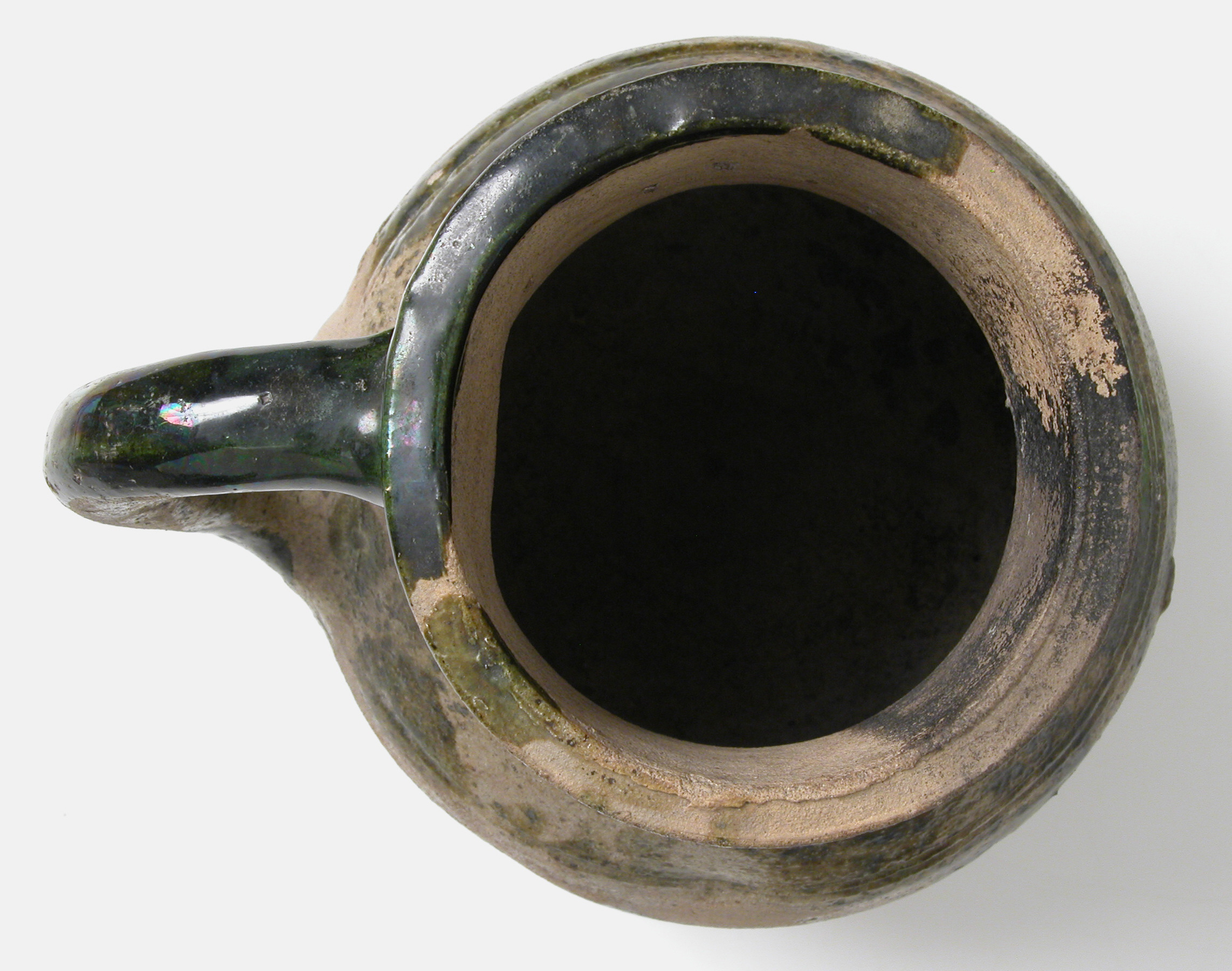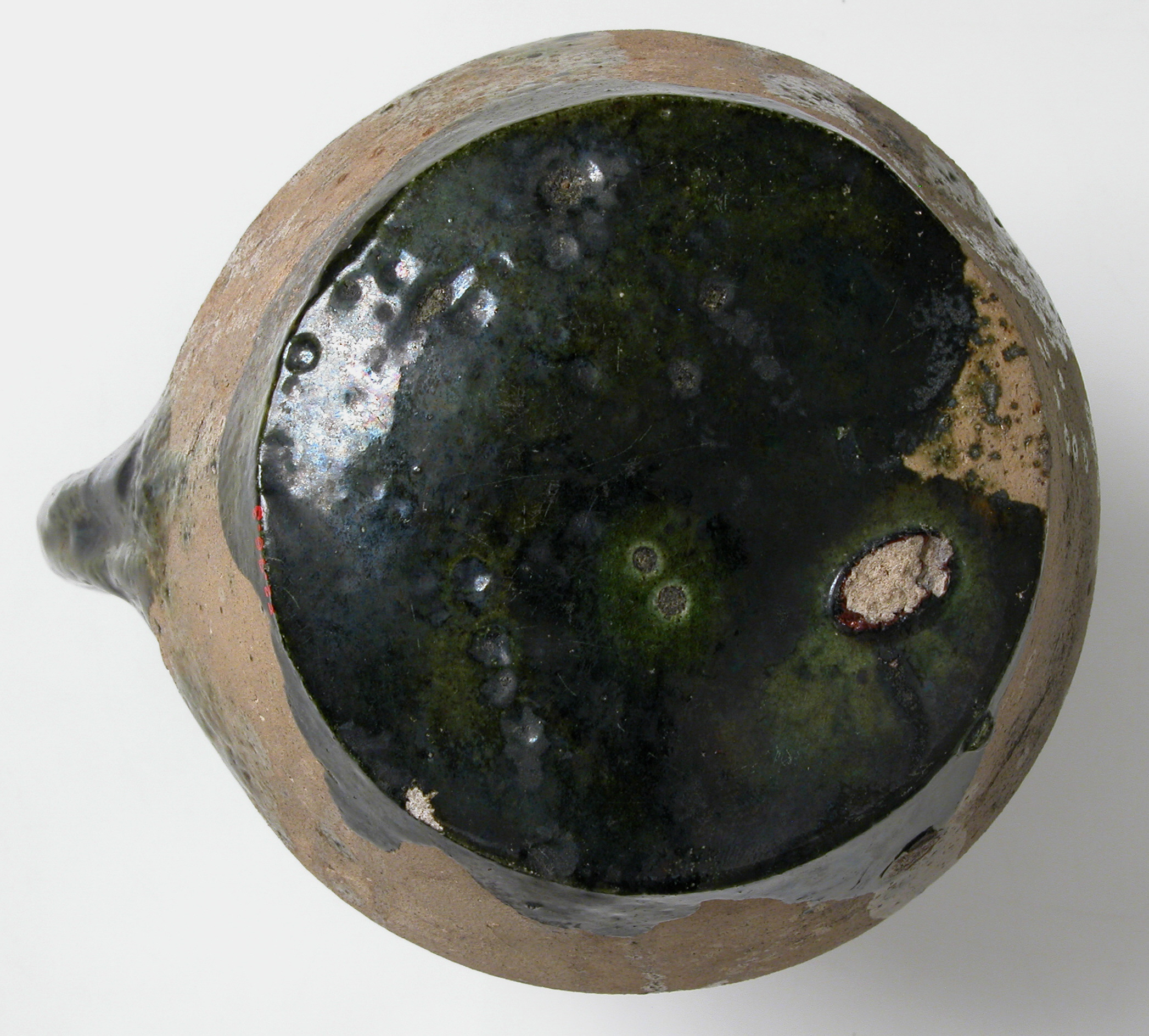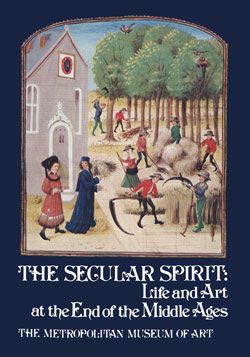Jug
Unlike Spanish and Italian tin-glazed earthenware, English pottery was not produced in a few particular sites, but over the entire country wherever the necessary clay beds existed. Produced in vast numbers for ordinary usage, these wares had little decorative value. For this reason, few examples have survived, and these have been recovered almost exclusively through excavation. The representation of English earthenware on the tables of affluent households, such as that in the Luttrell Psalter, is exceedingly rare. In spite of their commonplace nature, however, these objects can be appreciated for their pleasing profiles and simple, if occasionally careless, decoration.
Vessels such as this one, produced during the first half of the sixteenth century and generally referred to as Tudor jugs, were decorated with bands incised by a stylus on the wet clay while the jug was still spinning on the potter’s wheel. The vessel was then fired and given a bright green glaze. These jugs were made not only for pouring but were apparently used for drinking as well. As they resemble certain types of Rhenish stoneware vessels, it is possible that their style was influenced by German or Netherlandish immigrant potters working in Surrey, the probable site of their manufacture.
Due to rights restrictions, this image cannot be enlarged, viewed at full screen, or downloaded.
This artwork is meant to be viewed from right to left. Scroll left to view more.
